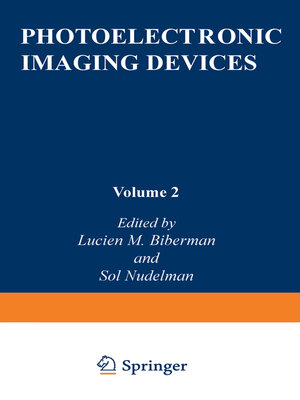Photoelectronic Imaging Devices
ebook ∣ Devices and Their Evaluation · Optical Physics and Engineering
By Lucien Biberman

Sign up to save your library
With an OverDrive account, you can save your favorite libraries for at-a-glance information about availability. Find out more about OverDrive accounts.
Find this title in Libby, the library reading app by OverDrive.



Search for a digital library with this title
Title found at these libraries:
| Loading... |
The past decade has seen a major resurgence in optics research and the teaching of optics throughout the major universities both in this country and abroad. Electrooptical devices have become a challenging form of study that has penetrated both the electrical engineering and the physics departments of most major schools. There seems to be something challeng ing about a laser that appeals to both the practical electrical engineer with a hankering for fundamental research and to the fundamental physicist with a hankering to be practical. Somehow or other this same form of enthusiasm has not previously existed in the study of photoelectronic devices that form images. This field of, endeavor is becoming more and more so phisticated as newer forms of solid state devices enter the field not only in the data processing end but in the conversion of radiant energy into electrical charge patterns that are stored, manipulated, and read out in a way that a decade ago would have been considered beyond some fundamental limit or other. It is unfortunate, however, that this kind of material has heretofore been learned only by the process of becoming an apprentice in one or more of the major development laboratories concerned with the manufacture of image intensifiers or television tubes or the production of systems employing these devices.






